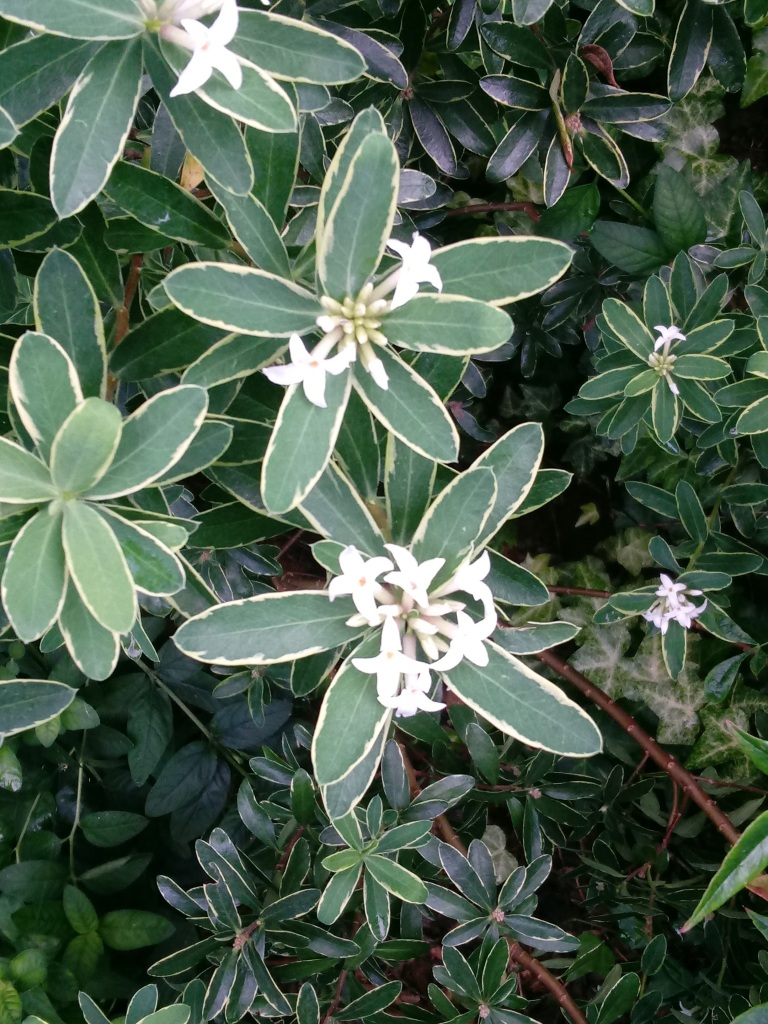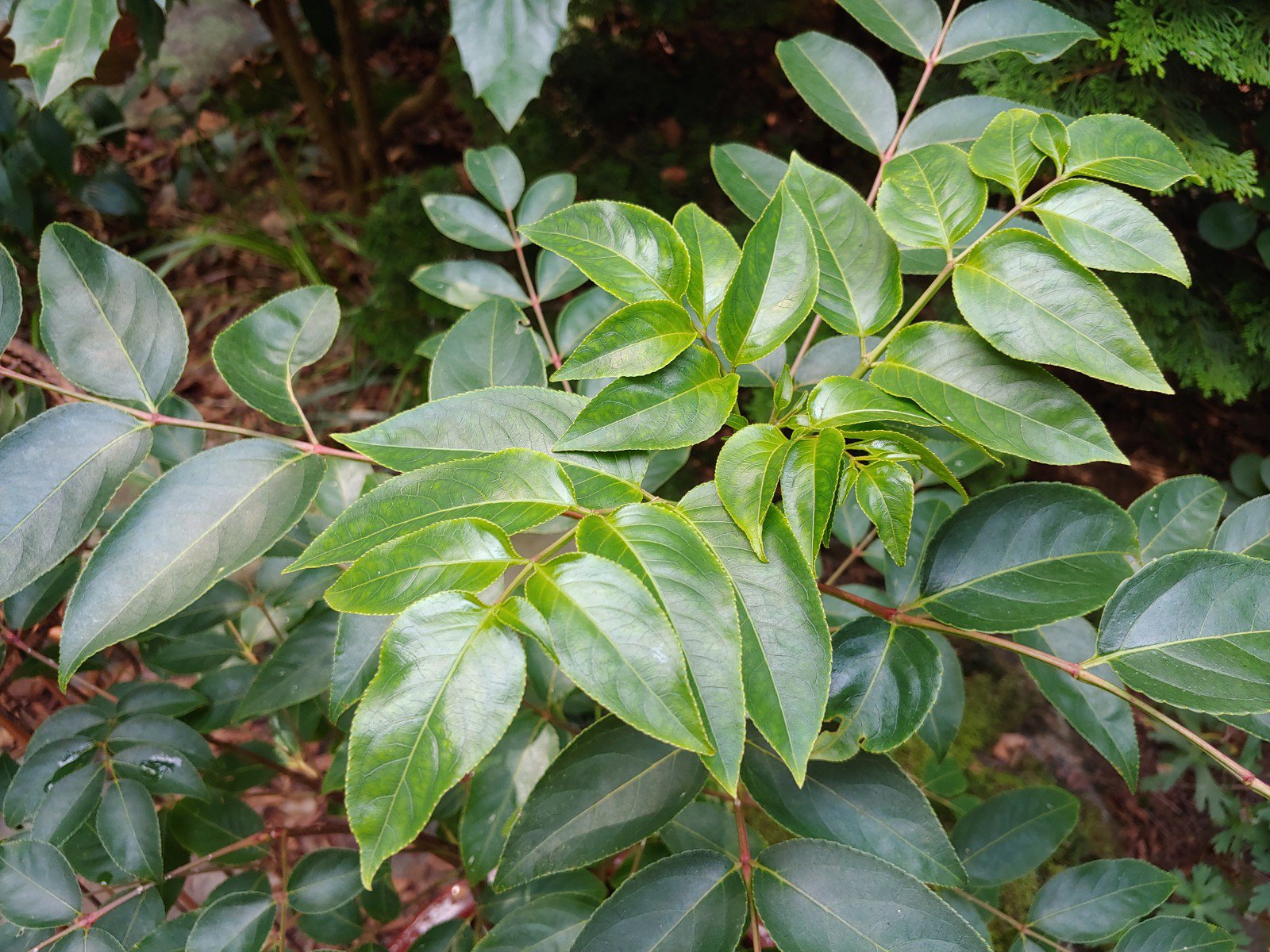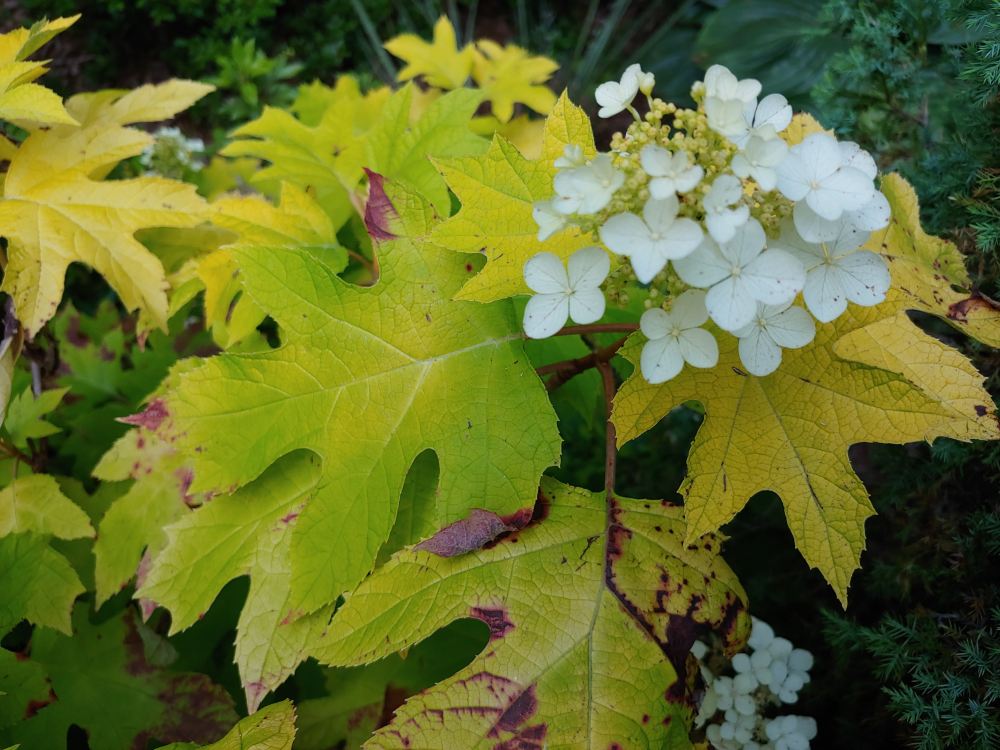In August’s heat, leaves of serviceberry (Amelanchier canadensis) begin to fall without coloring. The tree doesn’t go bare, but the canopy is substantially reduced. The purple leafed European beech (Fagus sylvatica ‘Atropurpurea’) often drops a thick carpet of leaves upon the stone path in late summer, which quickly turn to brown, though this year there are few despite recent dryness.
Leaf drop and other signs of summer stress are rarely reason for concern, though I am kicking myself for not monitoring more closely a ‘Summer Ice’ daphne ( Daphne x transatlantica ‘Summer Ice’) planted in spring. I wasn’t paying full attention (ever?), and didn’t notice until it turned completely brown. Yes, now I gave it a bucket of water, but it’s likely to be too late.

A dark leafed canna was planted as a temporary placeholder where a dead Japanese Umbrella pine was removed several weeks ago. There was little chance that the pine would survive, though it was worth the try, and now the canna fills the void until temperatures are suitable for planting one of the trees in pots that are waiting on the patios for this purpose. The Korean Sweetheart tree (Euscaphis japonica, below) seems the best candidate for planting since the space requires a medium sized tree, smaller than Japanese maples or the Dove tree (Davidia involucrata) that are also growing in containers. It will be a bit undersized to start, so perhaps I’ll need to purchase a bag of fertilizer to give it a jump. Nothing has been fertilized since the garden’s early days, but the Sweetheart tree must do some catching up.

Finally, I’ve decided that the yellow leafed Oakleaf hydrangea (Hydrangea quercifolia ‘Little Honey’, below) must be moved when temperatures turn cooler. I figured when it was first planted, incorrectly as it turns out, that the hydrangea would have just enough shade to keep leaves from scorching, but there is hardly a day when it looks good (Also, its blooms are just passable). I’m not certain it will be acceptable in a new, shadier spot, but every plant deserves a second chance, doesn’t it? I’m certain I won’t love it wherever it’s planted, but not every plant needs to be treasured.

A Chaste tree (Vitex agnus-castus, below) in the swampy lower garden, that was given up for dead and cut to the ground, has revived, not miraculously, since many vigorous shrubs will rebound from their roots, even when above ground growth is severely damaged. This spot is not so wet now in the heat of summer, and it seems that the shrub will tolerate extended periods of saturated soils, but not fourteen months without a period when the soil dries at least some. I struggled to find an appropriate large shrub to fill this void, so I’m quite happy to see that the Chaste tree has survived.

Several chaparral trees and shrubbery start to defoliate late in summer if the weather is dry and warm enough to cause them to do so. Sycamores sometimes start to defoliate half way through summer! The native buckeye develops foliage early spring, defoliated half way through summer, and then produces new foliage late in summer before defoliating again late in autumn. It seems weird that serviceberry does that though.